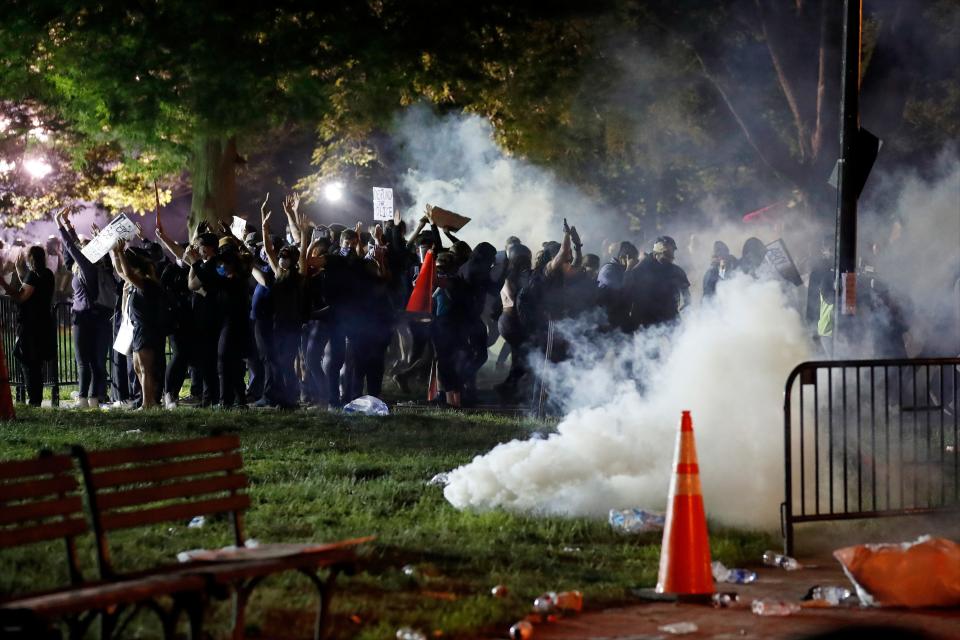Using Tear Gas On Protesters May Worsen Coronavirus Spread
Using riot control agents such as tear gas on protesters during a respiratory pandemic is likely to exacerbate the spread of the coronavirus, health experts warned.
An open letter signed by more than 1,200 infectious disease experts, public health professionals and community stakeholders urges law enforcement to refrain from deploying tear gas on people protesting police violence against Black communities. Police have been seen ― sometimes indiscriminately ― firing tear gas agents to disperse protests, many of which have been peaceful, in cities across the U.S.
The effects of tear gas make those already infected with COVID-19 able to transmit the virus more efficiently, and people who don’t have the virus more susceptible to infection through a number of pathways, Dr. Peter Chin-Hong, a School of Medicine professor and an infectious diseases specialist at UC San Francisco, told HuffPost.
“Tear gas is designed to make people cough, so that projects the virus, which moves via droplets,” Chin-Hong said of infected individuals. Screaming and shouting, too, could help further the spread, he said.
For those who do not have COVID-19, their risk of infection could increase if, as a result of tear gas, they’re touching their faces more, rubbing their eyes or removing their masks, in addition to being more vulnerable due to inflammation caused by the respiratory irritants in the gas, Chin-Hong said.
Research has also found that people who have inhaled tear gas may be at higher risk for respiratory illnesses in the days after exposure. A study conducted on U.S. Army soldiers found recruits were more likely to contract respiratory illnesses, including influenza, bronchitis and pneumonia, after exposure during training exercises. And a study in Turkey found civilians with repeated exposure to tear gas were more likely to develop chronic respiratory conditions.

Chin-Hong, who helped edit the letter after it was drafted by a group of infectious disease...


